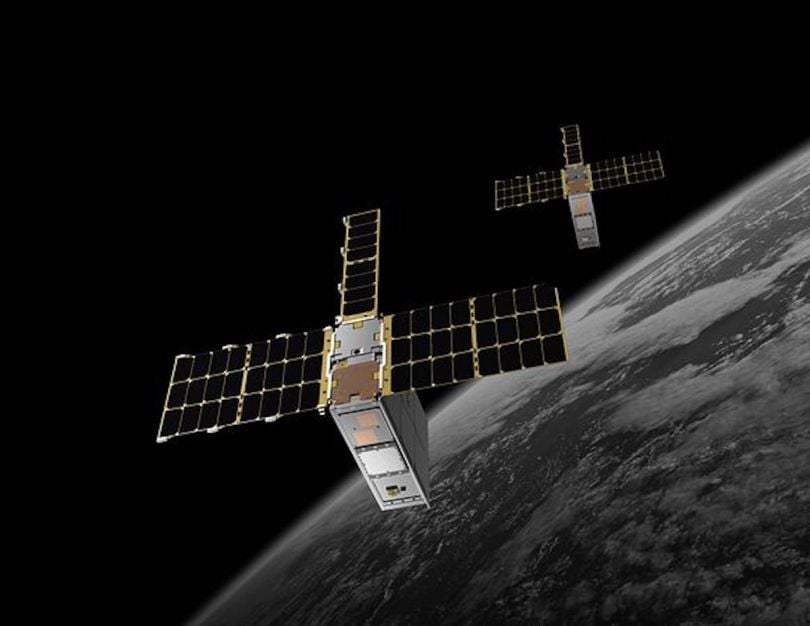CesiumAstro is preparing for a product launch of cosmic proportions.
The Austin-based company’s technology allows for faster, more efficient communication systems for satellites, unmanned autonomous vehicles, rockets and other space-bound or airborne vehicles.
CesiumAstro’s technology has been installed in a satellite that will be launched into Earth’s orbit by a rocket later this month. The company’s first-ever launch is tentatively scheduled for September 27, but that date could change due to weather conditions.
CesiumAstro specializes in designing and building active phased array systems that are faster and more efficient than traditional satellite beams, which are fixed and unable to be steered.
“Once [traditional satellites are] in orbit, you are tied into that design for a decade or more,” CesiumAstro CEO and founder Shey Sabripour told Built In Austin. “Our technology brings about dynamic beam-steering, agility and more throughput — and because of that, you can use the spectrum much more efficiently. ... If you want to change the footprint, you can do it in orbit using [our] software.”
A Growing Enterprise
Before launching CesiumAstro in 2017, Sabripour worked at Lockheed Martin for 24 years and as chief technology officer at Firefly Aerospace.
Since launching CesiumAstro, the company has grown to just under 80 employees and raised $29.2 million. Sabripour anticipates his workforce growing closer to 200 by the end of 2022, as the company is actively hiring for various roles in Austin.
The company’s rapid growth has led to new facilities. CesiumAstro recently outgrew its 10,000-square-foot office in the Hill Country Galleria just outside of Austin in Bee Cave. That space is now used for new product development. The corporate and engineering teams, meanwhile, have moved down the road to a 29,000-square-foot space on Bee Cave Parkway.
CesiumAstro’s growth has also led to an office outside of Texas. Earlier this year, the company opened a 13,000-square-foot office in Broomfield, Colorado, for the satellite design team.
Ready for Liftoff
Cesium Mission 1 will begin with a rocket launch from Vandenberg Space Force Base near Lompoc, California.
Once in orbit, the rocket will deploy a payload holding two CubeSats, or miniature satellites, containing CesiumAstro’s Nightingale 1 communication systems.
CesiumAstro is developing ground stations in Texas and Colorado that will communicate with the spacecraft. The CubeSats will operate in-orbit for five years.

For Cesium Mission 1, the company is partnering with the Department of Defense’s Defense Innovation Unit, which is seeking a reduced latency direct downlink to tactical ground terminals. CesiumAstro’s system allows the array to establish a link to both military and commercial ground terminals.
Sabripour said Cesium Mission 1 will be an exciting opportunity to show the capabilities of his technology, which he said will be increasingly important as Amazon, SpaceX, Telesat and other companies build and deploy thousands of small satellites in the coming years to solve global connectivity or climate and disaster management.
“Our products are finding their way in satellites, drones, airplanes — pretty much everything that’s mobile. ... With the launch of Cesium Mission 1, we are able to demonstrate some critical aspects of our technology, which will expand our market,” he said. “We’ve already had some customers who want to run experiments with Cesium Mission 1, which is a really good sign for us because it says we have the right technology at the right time.”
CesiumAstro’s other customers include NASA, the U.S. Navy, the Missile Defense Agency, Blue Origin and Airbus. Sabripour said his clients are split between commercial entities and government agencies.




